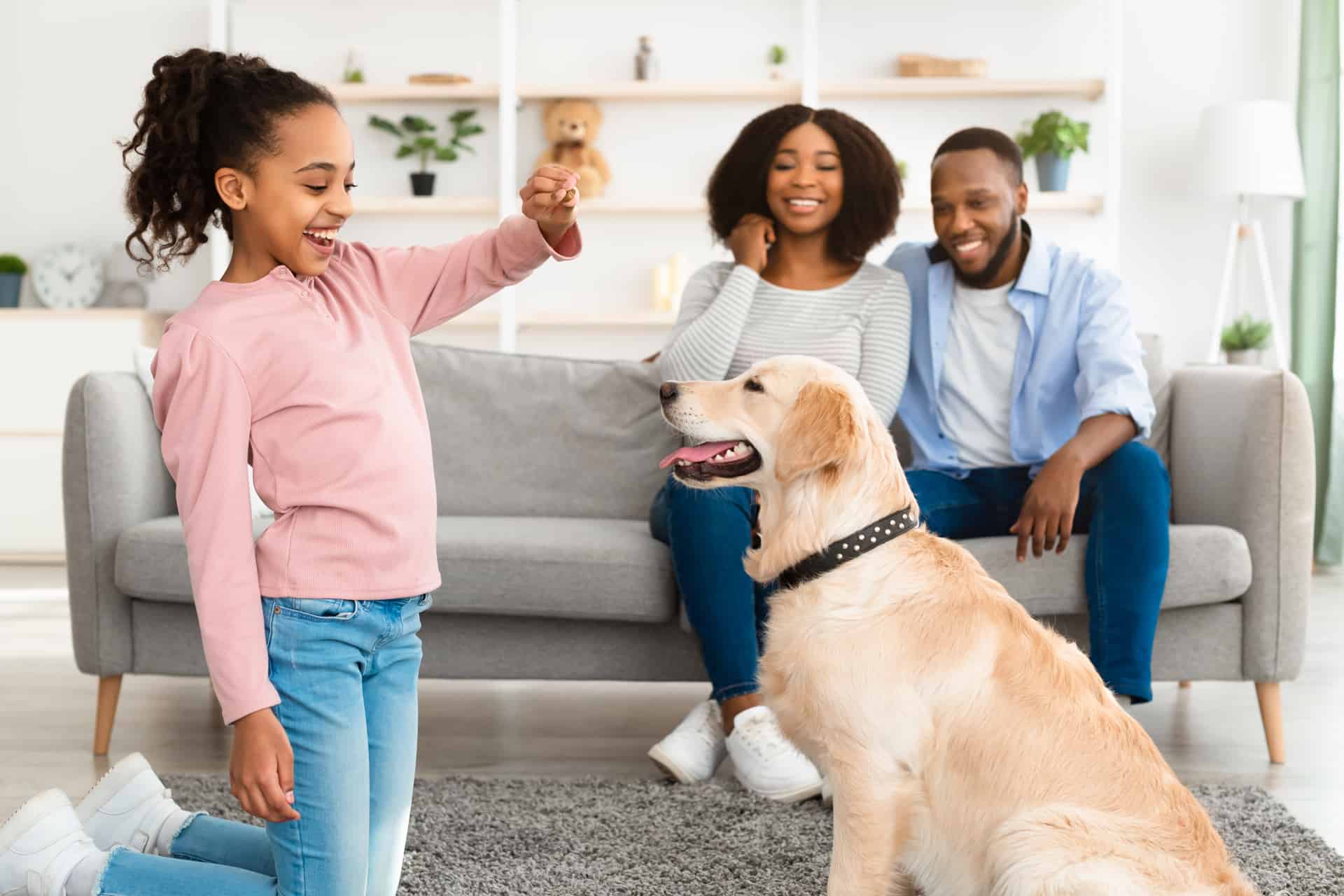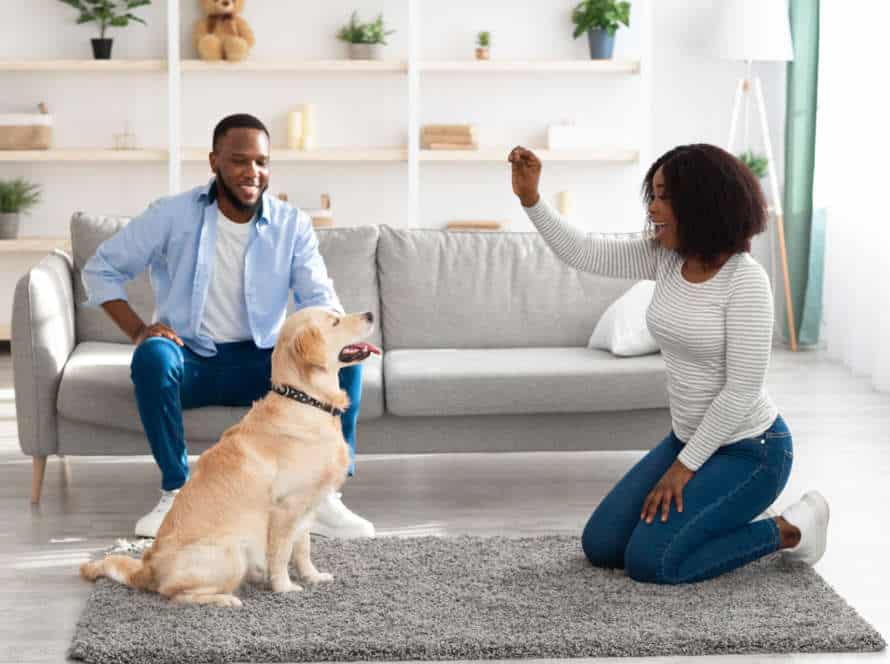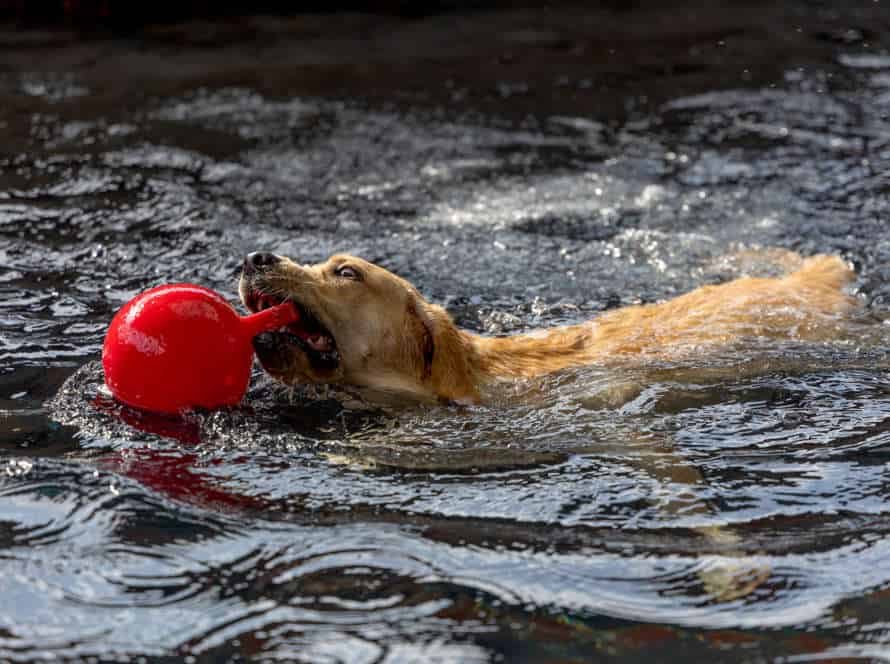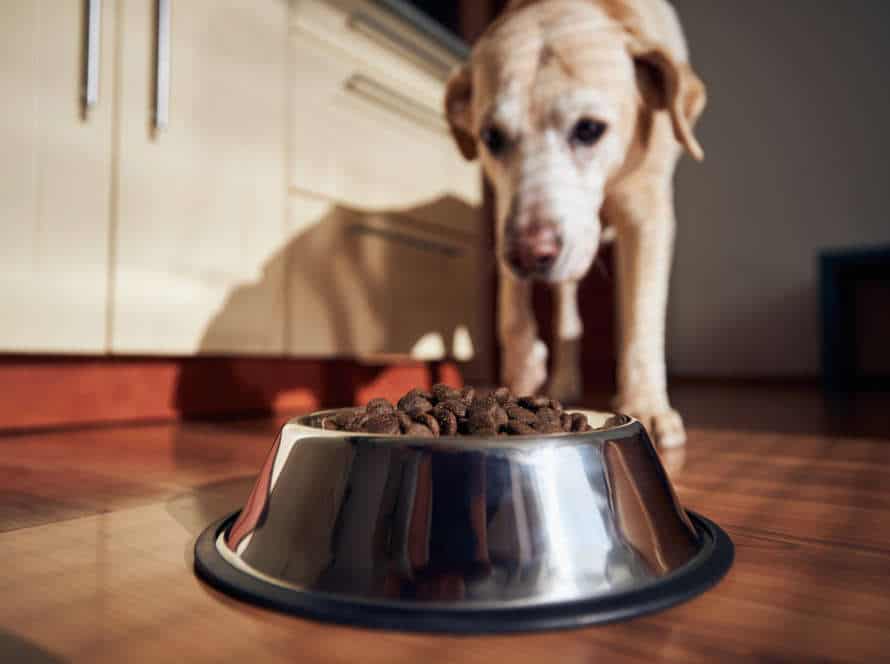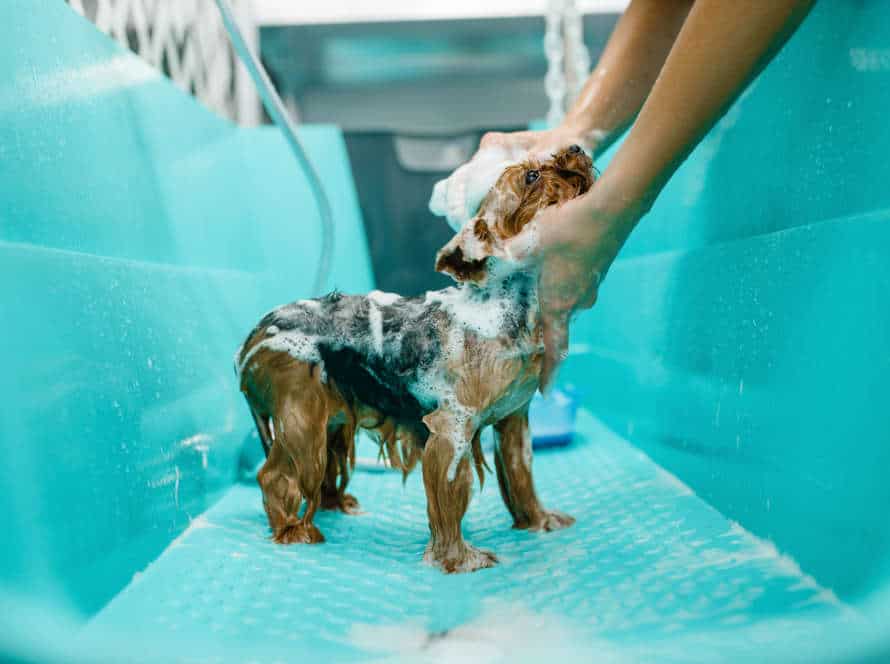The Power of Positive Reinforcement in Shaping Your Dog’s Behavior
Positive reinforcement is an effective, humane way to shape your dog’s behaviour. Reward good behaviour by giving treats, verbal praise and petting. Redirect unwanted behaviour instead of punishing. For example, if your pup is jumping on guests, give them a toy or treat. Be consistent with rewards! This helps your dog learn and builds trust between you. It also helps boost their confidence.
Benefits of Positive Reinforcement
Positive reinforcement: an effective, humane way to shape dog behavior! With treats, toys and compliments, dogs can learn to follow instructions, leash-walk and do their business outdoors. Here’s a guide to the advantages of positive reinforcement, so you can make the most of this training technique.
Promotes a strong bond with your pet
Positive reinforcement training is great for your pet. Rewards and praising for good behavior, and ignoring or redirecting bad behavior. This form of training builds trust and confidence in your pet.
It also prevents unwanted behaviors like biting or chewing. Positive reinforcement creates a strong bond between you and your pet.
Pro tip: Be consistent with rewards and praise to reinforce desired behavior.
Boosts the overall well-being and confidence of your dog
Positive reinforcement is a power-packed tool for molding your pup’s behavior and enhancing their overall well-being and assurance. Rather than punishing undesired conduct, rewarding wanted behaviors helps canines discover and adjust in a stress-free and agreeable way.
Benefits of utilizing positive reinforcement include:
- Deepening the connection between you and your furry companion.
- Fostering good habits and averting bad ones.
- Stimulating mentally and physically, diminishing dullness and anxiety.
- Enhancing self-esteem and confidence, cutting down fear and nervousness.
Positive reinforcement techniques to try:
- Treats and praise for good actions.
- Clicker training to reinforce certain behaviors.
- Play and exercise as rewards.
- Consistency and patience to create a positive relationship.
Increases the effectiveness and efficiency of training
Positive reinforcement offers many benefits for successful dog training. It can help shape your pup’s behavior in positive ways. Here’s how:
- Encouraging good behavior. By rewarding your pup for good behavior, they’ll be more likely to do it again.
- Building trust. Dogs feel better when they get positive feedback. This builds a strong connection and helps them understand their role.
- Creating a positive link. Treats, play, and affection are rewards that teach your pup that being with you is positive.
- Stimulating motivation. When dogs know what’s expected and get rewarded, they become more excited to learn.
Pro tip: A clicker can be a great way to communicate with your pup during positive reinforcement.
Positive Reinforcement Techniques
Positive reinforcement is a powerful tool for creating your pup’s behavior. Rewarding wanted behavior motivates your animal to do it again. You can use positive reinforcement to coach your pooch in politeness, obedience, special orders, and more. Let’s look at the techniques used for positive reinforcement and how you can apply them with your pup.
Use of treats to reward desired behavior
Positive reinforcement with treats is an effective way to shape a dog’s behavior. Here’s how to use it effectively:
- First, identify the behavior you want your pup to do.
- Make a clicking sound or a verbal cue when they do it right.
- Straight away, give a treat as a reward.
- Be consistent and keep giving them treats when they perform the wanted behavior.
- Gradually, lessen the amount of treats as the behavior becomes more consistent.
- Remember, healthy treats in moderation. Don’t use treats as a bribe or a substitute for training.
Verbal praise and physical affection to reinforce good habits
Verbal praise and physical affection are awesome ways to encourage good behaviors in your pup. Here’s how to use these positive reinforcement techniques:
- Verbal praise: Say something cheerful and lively when your doggo does something you want or follows a command. For example, when your pup sits on command, immediately reward them with “Good doggo!” or “Good job!”.
- Physical affection: Petting, hugging, and giving treats are all good ways to show your pup love and reward them for good behavior. Make sure not to overdo it though!
By using verbal praise and physical affection constantly, your pup will learn to keep repeating the good behaviors, and your bond with them will be stronger.
Pro tip – Don’t forget to combine positive reinforcement with consistent training and clear communication for maximum effectiveness.
Clicker training to signal positive behavior
Clicker training is a great way to reinforce positive behavior in your dog. You use a clicker tool to make a clicking sound when your pup does something you want them to do. Then you reward them with something they like, like a treat or praise.
To use clicker training, start with a behavior you want your dog to learn. Then click the clicker when they do it. Follow it up with a reward.
Repeat this process often. As your pup gets better, space out the clicks and rewards. Eventually, your dog will understand that the sound of the clicker means good behavior. They’ll respond to your commands more easily.
Applying Positive Reinforcement in Specific Scenarios
Positive reinforcement is a great way to train your dog. Give rewards for good behaviour! This article looks at how you can use rewards to shape your pup’s behaviour in different situations. Try it out and see the results!
House training your furry friend
Training your four-legged companion can be tricky. But, if you use positive reinforcement in the right situations, you can shape your pup’s behavior effectively. Here are some examples:
- Potty Training: Treats and praise right after they use the potty area will get them to repeat this positive behavior.
- Crate Training: Give your dog treats and toys inside the crate. This will make them link it to something good and willingly enter it in the future.
- Commands and Tricks: When they do a command or trick correctly, reward them with treats or playtime. This will make them listen to you and follow your directions.
Remember! Positive reinforcement should be immediate, consistent, and tailored to your dog’s personality.
Teaching your pet basic commands such as sit, stay, down, etc.
Teach your pet basic commands. Use positive reinforcement as a method. Reward good behavior with treats or praise. This encourages the pet to act this way again. Here are tips to do this:
- Give treats when they obey commands like “sit“.
- Praise or pet them when they do something right.
- Don’t punish bad behavior. This could lead to anxiety.
- Be consistent. Use the same words and rewards each time.
Positive reinforcement can help you and your pet have a better relationship and a better life.
Curbing undesirable behaviors such as biting, excessive barking, etc.
Positive reinforcement is an effective way to shape a dog’s behavior. It can stop biting, excessive barking, and more. Here’s how to use it:
- Biting: Direct the biting towards a chew toy and reward them when they chew it.
- Excessive barking: Teach the “quiet” command and reward them for following it.
- Jumping on people: Teach the “sit” command and reward them for sitting.
- Digging: Give them a designated digging area and reward them for using it.
With patience and persistence, you can use positive reinforcement to teach your furry friend new behaviors and replace bad ones with good. Your pup can become a well-behaved companion!
Common Mistakes to Avoid
Pet owners often make the wrong use of positive reinforcement. Knowing how to correctly use it is key to shape your pup’s behavior. Here, we’ll talk about the common mistakes and how to prevent them.
Inconsistent application of positive reinforcement
Positive reinforcement – use it correctly and consistently, and you’ve got a powerful tool to shape your dog’s behavior. But, don’t be inconsistent with it, or you won’t get the results you want. Here are some mistakes to avoid:
- Timing and frequency of rewards must be precise, or your pup won’t know what to expect. Reward their good behavior right away and every time.
- Don’t punish them or give negative reinforcement – this will cancel out the effects of positive reinforcement.
- Gradually phase out treats and rewards, so your pup’s behavior is consistent without them.
- Make sure your commands are clear and consistent – that way, your pup knows what behavior gets rewarded and what doesn’t.
By avoiding these mistakes, your pup will respond better to positive reinforcement, and you’ll see good progress in their behavior.
Failing to reward after the desired behavior is demonstrated
Dog owners often make a mistake when training – they forget to reward their pup properly for good behavior! Positive reinforcement should always be used instead of punishment. Here’s how to avoid this mistake:
- Have treats or praise ready to give when your pup behaves.
- Be consistent with rewards, so they know what’s good.
- Change it up sometimes, to keep them interested.
Positive reinforcement is vital to having a happy, obedient pup!
Using punishment as a form of discipline
Using punishment as a form of discipline can have bad effects on your dog. Common mistakes pet owners make: physical violence, yelling, and isolation. These can lead to fear, anxiety, and aggression in dogs. It can also damage the trust between you and your pet.
A better way to train your dog is positive reinforcement. Reward your dog for good behavior using treats, praise, or toys. This strengthens the bond between you and your pet. It also reduces the risk of bad behaviors.
Conclusion and Recommendations
To wrap up, positive reinforcement is a humane and successful way to alter your pup’s actions. It can be employed to promote wanted behavior, prevent unwanted behavior, and honor your canine’s great deeds. With patience and consistency, you can use positive reinforcement to improve your pup’s behavior in a positive way.
Here are some pieces of advice to make the most of positive reinforcement:
Recap of the key takeaways
To sum up, positive reinforcement is a great and humane way to teach your pooch. Here are the main points:
- Positive reinforcement means giving treats, compliments, and attention when your dog does something good.
- Punishment and negative reinforcement can cause fear and worry in your pup, which leads to unwanted behavior.
- Being consistent and patient is essential for successful positive reinforcement.
- When your pup does something bad, ignore it or distract them with something better.
- Each dog is different, so be open-minded and change your training techniques if needed.
By using positive reinforcement, you can have a strong connection with your pup and have lots of fun together. Pro tip: Training your canine can be fun and rewarding for both of you!
Additional resources for positive reinforcement training
Positive reinforcement training is super effective in changing your pup’s behavior. Need help getting started? Here are some ideas:
- Read up! There are lots of books, like “Don’t Shoot the Dog” and “The Power of Positive Dog Training“.
- Get online! Udemy and Coursera have courses on positive reinforcement training.
- Get a pro! Consulting with a specialist in positive reinforcement can be useful.
Remember to be consistent when it comes to behavior change. These resources will help you create a strong bond with your four-legged pal.
Tips for successful and long-lasting results
Positive reinforcement is a great tool to shape your pup’s behavior. A little patience and consistency will lead to successful long-term results. Here are some tips:
- Always be consistent. Reward good behavior and use the same command each time.
- Use treats your dog enjoys. Only use them for training to create a positive connection.
- Keep training sessions short and frequent. Dogs have short attention spans, so focus on one behavior at a time.
- Be patient. It takes time for dogs to learn new behaviors, so be patient and consistent.
- Practice in different places. Generalize learning to different environments to make sure your pup understands the behavior and cue in any setting.
Use positive reinforcement to strengthen your bond with your dog and build a trusting and obedient relationship that lasts forever.
Frequently Asked Questions
1. What is positive reinforcement?
Positive reinforcement is a training technique that involves rewarding your dog for exhibiting desirable behavior. This can include food treats, verbal praise, or even a favorite toy.
2. How does positive reinforcement work?
Positive reinforcement works by encouraging your dog to repeat behaviors that result in a positive outcome. By rewarding positive behavior, you can help your dog learn what you want them to do, and avoid punishing unwanted behavior that can make the training process harder.
3. Can positive reinforcement be used for all dogs?
Positive reinforcement can be used for most dogs, regardless of age or breed. It is a humane and effective training technique that can help build a stronger bond between you and your furry friend.
4. How should I use positive reinforcement?
Positive reinforcement should be used consistently and in conjunction with other training techniques. When your dog exhibits good behavior, immediately offer a reward, whether that be a treat or verbal praise. Positive reinforcement should also be used to redirect unwanted behavior, rather than punishing your dog for it.
5. Can positive reinforcement be used to correct behavior problems?
Positive reinforcement can be used to correct many behavior problems, including barking, jumping, and biting. However, for more serious issues such as aggression or separation anxiety, it is important to consult with a professional trainer or behaviorist.
6. Are there any potential downsides to using positive reinforcement?
While positive reinforcement is generally considered safe, it is important to always use it in moderation. Overuse of treats can lead to weight gain and other health problems, while excessive verbal praise may lose its effectiveness over time. Additionally, some dogs may become overly reliant on treats and not be motivated to perform without them.

